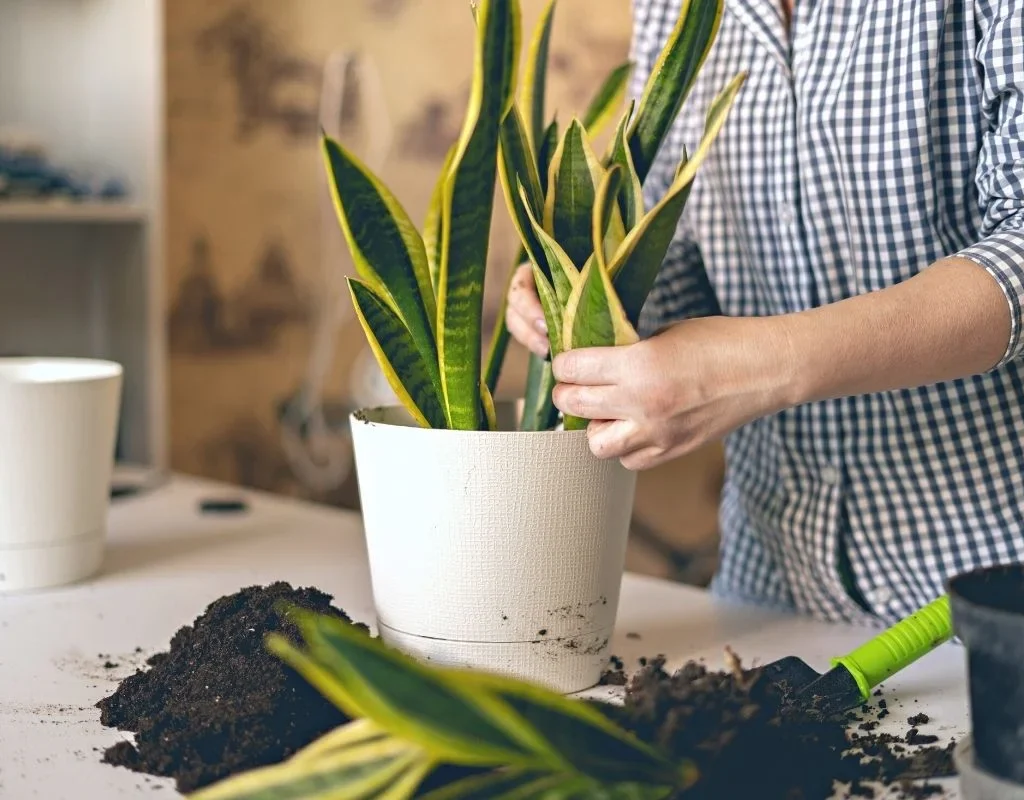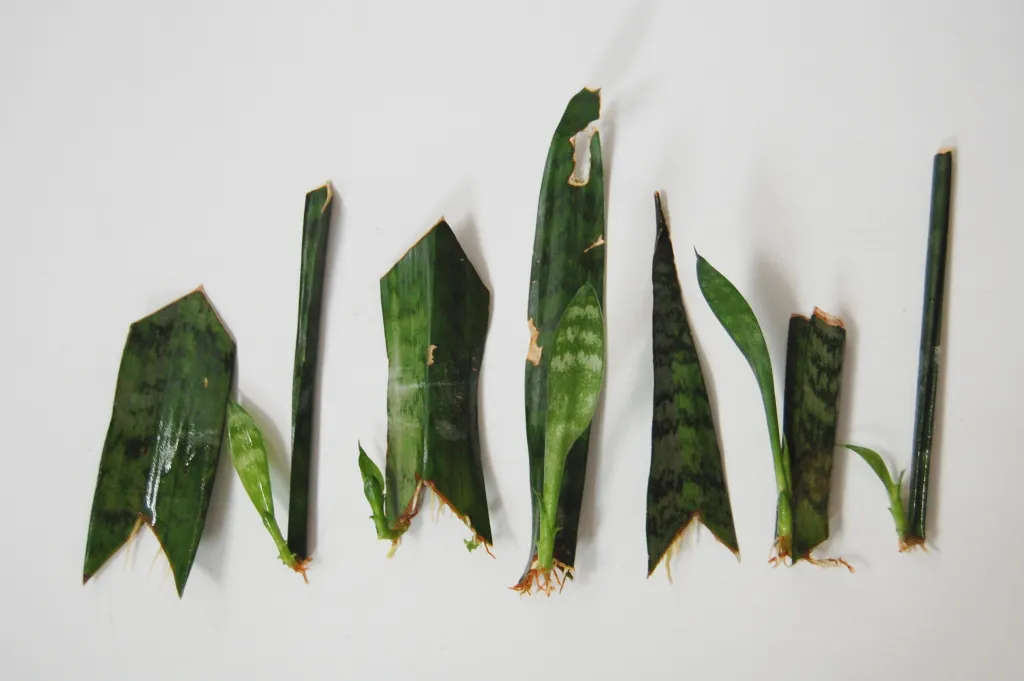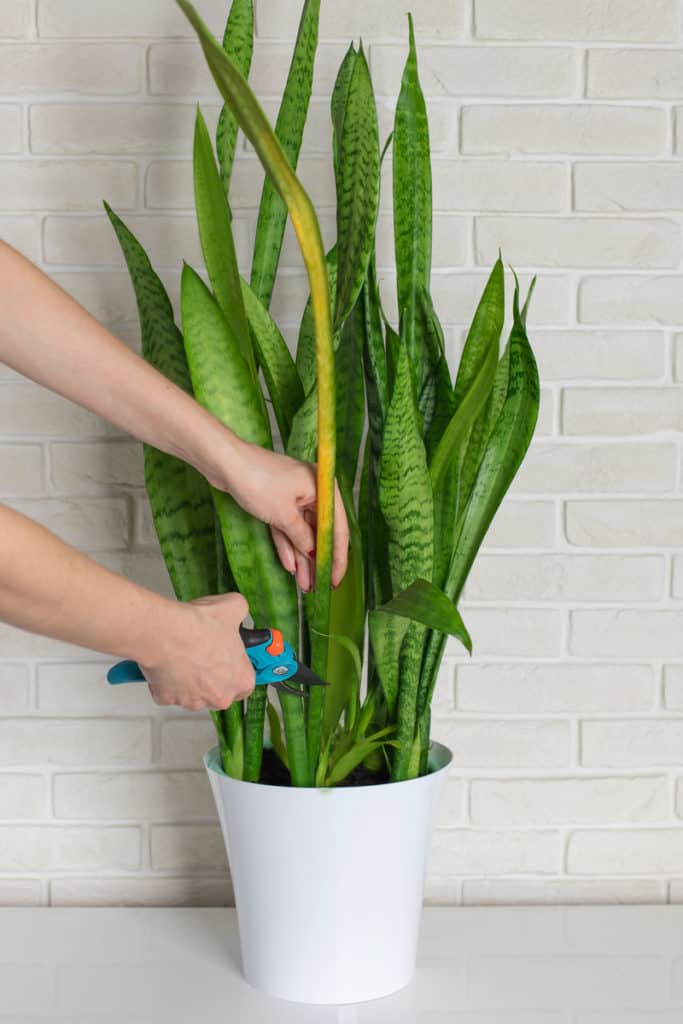The snake plant (Dracaena trifasciata, formerly Sansevieria) is one of the most beloved houseplants for its architectural beauty, hardiness, and air-purifying properties. Known for its upright, sword-like leaves and resilience in low-light and drought conditions, it requires very little attention. However, one essential care routine often overlooked is trimming and pruning.
Proper pruning not only enhances your snake plant’s appearance but also encourages healthy growth, prevents overcrowding, removes damaged leaves, and even aids in propagation. But trimming it incorrectly can lead to injury, rot, or a stressed plant.
In this comprehensive article, we’ll cover when, why, and how to trim and prune your snake plant safely, including step-by-step instructions, common mistakes to avoid, and post-pruning care tips.
Why Prune a Snake Plant?

Snake plants are generally low-maintenance, but pruning becomes necessary in certain conditions:
1. To Remove Damaged or Diseased Leaves
Yellowing, browning, or mushy leaves are signs of overwatering, physical damage, pests, or fungal infections. Removing these prevents the spread and improves the plant’s health.
2. To Control Size and Shape
Snake plants can grow quite tall and wide over time. Pruning helps maintain a desirable height, symmetrical shape, or makes the plant more compact for small spaces.
3. To Encourage New Growth
Removing old, dying leaves gives the plant more energy to produce fresh, healthy shoots.
4. To Rejuvenate Overgrown Plants
If your snake plant is crowded or leggy, pruning can reinvigorate it and improve airflow between leaves.
5. To Harvest Cuttings for Propagation
Trimming leaves for propagation allows you to grow new snake plants from the original.
When Is the Best Time to Trim a Snake Plant?

While snake plants can technically be pruned any time of year, the ideal time is during the growing season—spring to early summer.
- During active growth, the plant heals faster and is more likely to produce new shoots.
- Avoid heavy pruning in winter when the plant is dormant; recovery will be slower.
Light trimming of damaged or dead leaves can be done any time.
Tools You’ll Need
- Sharp, sterilized pruning shears or scissors
- Gloves (optional but recommended for protection)
- Clean cloth and rubbing alcohol for sterilizing tools
- Paper towel or tray to collect trimmed leaves
- Small container or vase if propagating in water
Step-by-Step Guide: How to Trim and Prune Your Snake Plant Safely
Step 1: Inspect Your Plant
Look for:
- Dead or dying leaves (yellow, brown, shriveled, or mushy)
- Leaves damaged from sunburn, pests, or physical injury
- Crowded clumps or overgrown sections
- Leaning or top-heavy growth that throws the plant off balance
Mark which leaves to remove or shorten.
Step 2: Prepare Your Tools
- Use sharp pruning shears or scissors.
- Disinfect blades with rubbing alcohol or diluted bleach to prevent disease transfer.
- If reusing tools, re-sterilize between cuts on diseased leaves.
Step 3: Cut at the Base
For full-leaf removal:
- Gently pull the leaf away from the base to create space.
- Cut as close to the soil line as possible without damaging nearby leaves.
- Make a clean, straight cut to avoid frayed edges and bacterial entry.
This technique is best for:
- Damaged or infected leaves
- Trimming for propagation
- Removing older outer leaves
Step 4: Trim the Leaf Tips (Optional)
If only the tips of leaves are brown or unsightly, you can snip just the affected portion.
- Follow the natural shape of the leaf while trimming.
- Avoid leaving flat or blunt cuts, which look unnatural.
- Be cautious not to cut too far into healthy tissue.
This technique preserves the leaf while improving appearance.
Step 5: Prune for Shape or Height

To reduce the plant’s overall height:
- Select the tallest or most awkwardly positioned leaves.
- Cut the entire leaf down at the base rather than just chopping off the top.
- Cutting only the tops leaves an unnatural edge and doesn’t stimulate healthy growth.
If you’re shaping the plant:
- Step back and assess the symmetry after each cut.
- Focus on maintaining a balanced, vase-like appearance.
Step 6: Clean Up and Dispose or Propagate
- Discard unhealthy leaves in the trash (not compost, if infected).
- Save healthy cuttings if you’d like to propagate:
- Let them callous over for 1–2 days before placing in water or soil.
- Label and track your cuttings if trying multiple varieties.
Post-Pruning Care Tips

After pruning, help your snake plant recover and grow back stronger:
1. Hold Off on Watering
Wait 2–3 days before watering to allow the cut surfaces to callous and prevent rot.
2. Provide Indirect Bright Light
Place in a well-lit area but away from direct sunlight to reduce stress.
3. Avoid Fertilizing Immediately
Let the plant stabilize for 1–2 weeks before feeding. Use diluted fertilizer during active growth.
4. Watch for New Growth
Healthy snake plants often sprout new pups (baby shoots) from the base after pruning.
How to Propagate Snake Plant Cuttings

Repurposing your trimmed leaves is a great way to multiply your plant. Here’s how:
Propagating in Water:
- Cut leaf into 4–5 inch segments.
- Make a small notch to remember which end was the bottom (it must be planted upright).
- Let the pieces dry for 1–2 days.
- Place bottom ends in a glass of water, ensuring only the base is submerged.
- Keep in bright, indirect light and change water weekly.
- Roots and pups will appear in 1–2 months.
Propagating in Soil:
- Follow the same cutting and drying method.
- Insert segments into a moist cactus/succulent mix.
- Water lightly and keep in a warm spot.
Note: Variegated varieties may lose their patterns if propagated by leaf cuttings.
Common Mistakes to Avoid
| Mistake | Why It’s Harmful |
|---|---|
| Cutting only the leaf tip | Results in blunt, unnatural-looking leaves |
| Not using sterilized tools | Increases risk of infections and leaf rot |
| Overwatering after pruning | Soft cut wounds are more prone to rot and disease |
| Cutting during winter dormancy | Slower healing and recovery |
| Removing too many leaves at once | Can shock the plant and stunt future growth |
Frequently Asked Questions
Q: Can I cut a snake plant all the way down?
Yes, but only if necessary—such as in cases of full rot or rejuvenation. The rhizomes (underground stems) can send up new shoots if healthy.
Q: Will a cut snake plant leaf grow back?
The leaf itself will not regrow, but the plant can produce new leaves from the base if conditions are right.
Q: How often should I prune a snake plant?
Only as needed—typically once or twice a year. Over-pruning is unnecessary.
Conclusion
Trimming and pruning your snake plant doesn’t just keep it looking good—it supports healthier growth, disease prevention, and propagation. When done correctly, pruning can rejuvenate a leggy or overgrown plant and help maintain the classic upright form snake plants are famous for.
With the right tools, timing, and techniques, pruning becomes a simple and rewarding part of snake plant care. Whether you’re removing old leaves, shaping your plant, or multiplying your collection, proper trimming practices ensure your snake plant thrives for years to come.





